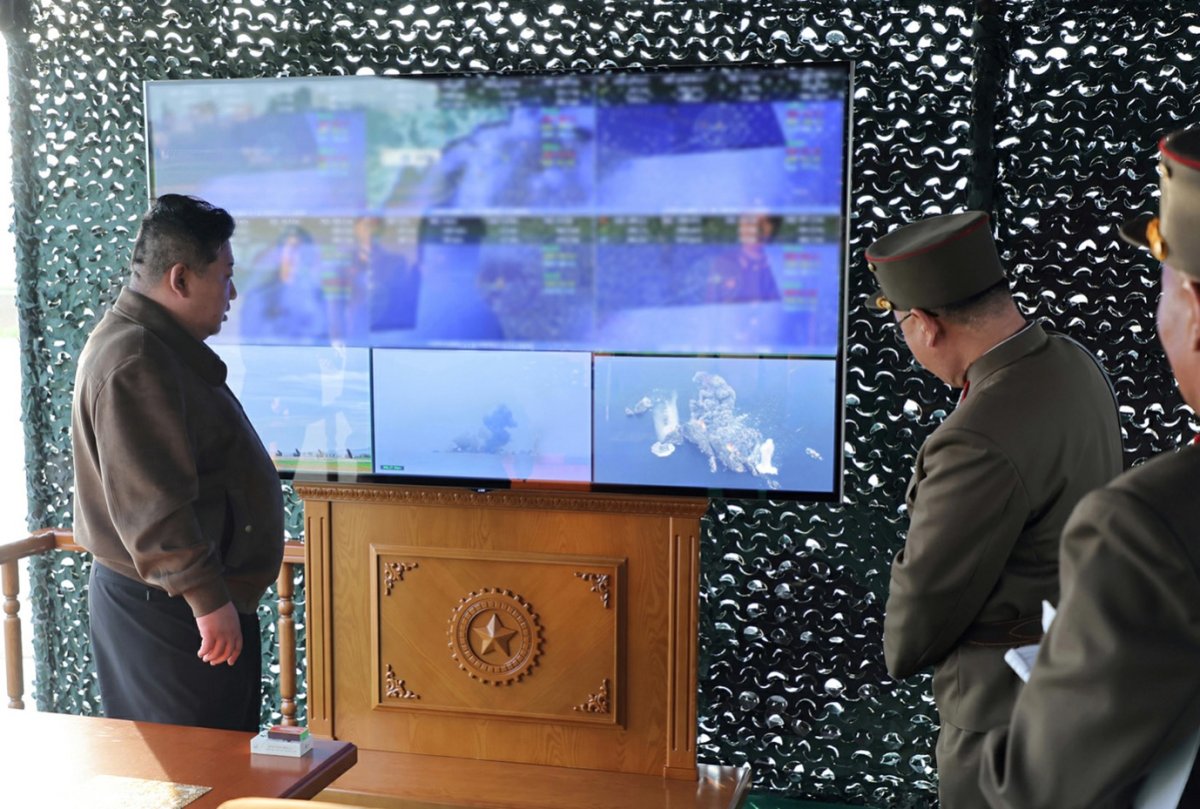North Korea satellite images show mysterious activity along border
Recently captured satellite imagery reveals that North Korea has cleared a 1.8-mile strip of land extending into the demilitarized zone (DMZ), the 2.5-mile-wide boundary separating North and South Korea, an apparent escalation in tensions between the two nations.
Imagery from Planet Labs provided Newsweek reveal at least four locations where newly cleared land has appeared in recent weeks, extending past North Korea’s final border fence into the DMZ.
The cleared strip of land, covered by vegetation as of late April, now spans over half a mile inside the DMZ and follows a mountain ridge near South Korea’s Goseong Unification Observatory.
The activity revealed in the new images come after earlier reports that North Korean troops were constructing new positions at some guard posts near the DMZ. Photos published by the South Korean news site The Fact showed about 30 soldiers building new fortifications at an existing hilltop border post, their movements seen from across a river in Tanhyeon-myeon, in South Korea’s Paju region.
The most recent imagery however shows that the extent of the construction is more extensive than previously reported.
Planet Labs
Immanuel Kim, a professor in the Korean department at George Washington University, told Newsweek that one reason for these land clearances is likely to improve visibility across the DMZ. Most of the area is covered by forest and bushes, and clearing this vegetation allows North Korean troops to monitor the area more effectively.
“Open land makes it easier to spot any movements or activities from the other side. Easier movement for military personnel and vehicles is a significant advantage,” he told Newsweek. “Cleared land facilitates quicker and more efficient mobilization in case of any military action or emergency,” he added.
Military activity inside the DMZ is prohibited under the armistice agreement that ended the 1950-53 Korean War, but both sides have violated the agreement “several times,” Kim said.
While North Korea’s exact motivations behind the new activity around the border are unclear, it follows a series of new aggressions against the South. Over the past week, the Kim Jong-Un regime has engaged in GPS jamming attacks, missile launches, and a campaign of sending balloons filled with trash and waste into South Korea.
A series of unusual North Korean provocations 🧵
—GPS jamming attacks for 5 days in a row
—Salvo launch of 18x missiles in “show of force”
—Sent nearly 1,000 balloons filled with trash & waste toward Seoul
—Installing mines, reinforcing fences, & moving heavy equipment in DMZ pic.twitter.com/wA4CCurStu— Ian Ellis (@ianellisjones) June 7, 2024
The trash balloons, which included items such as cigarette butts and manure, landed across South Korea’s densely-populated northern provinces, including Seoul.
On Tuesday, the South Korean government, led by President Yoon Suk Yeol, blamed “continuous provocations” by the North for its decision to fully suspend a 2018 agreement that had previously limited military maneuvers on both sides and led to the removal of landmines and border posts.

Rodong Sinmun
Following those provocations, Seoul announced this week that “all military activity” would resume at the country’s land and maritime borders with the North.
“This confrontational approach marks a significant policy shift, highlighted by a recent joint military exercise involving South Korea, the US, and Japan,” said Kim. “From North Korea’s perspective, this trilateral military cooperation is unprecedented and seen as a major threat.”
Uncommon Knowledge
Newsweek is committed to challenging conventional wisdom and finding connections in the search for common ground.
Newsweek is committed to challenging conventional wisdom and finding connections in the search for common ground.

